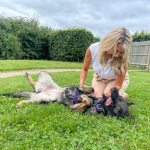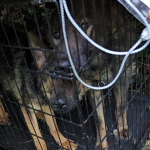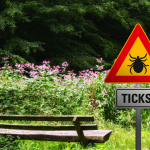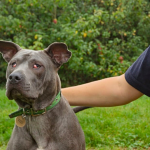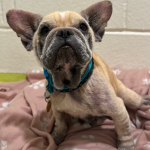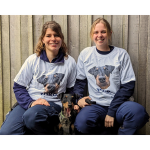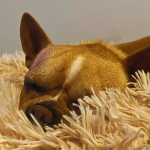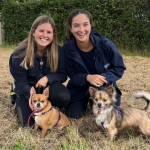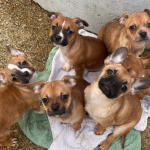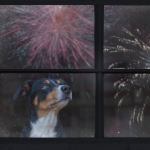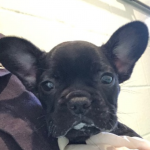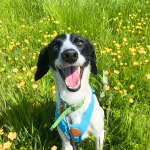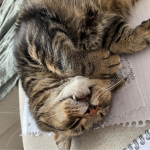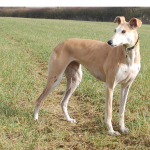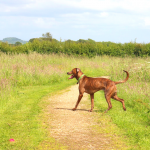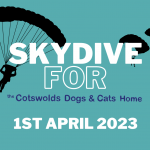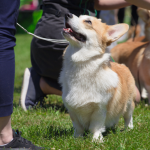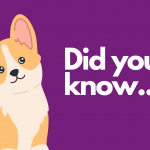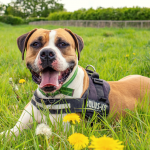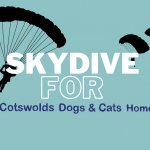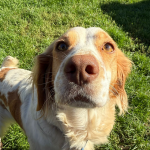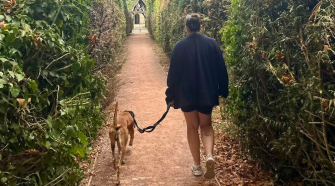
Muzzle Training Guide
Did you know that muzzle training can be a positive and empowering experience for your dog?
At The Cotswolds Dogs & Cats Home, we’re here to help you every step of the way!
Key Info:
*Training sessions should only be carried out when your dog is relaxed and, in an environment, where
they feel comfortable.
*Each stage of this guide should be carried out until your dog feels 100% comfortable
before moving onto the next.
*If your dog is avoidant of the muzzle, backs away, flinches or tries to paw at the muzzle at any point go back to the previous stage.
What you will require for this training:
• High value treats, preferably something spreadable and longer lasting like, primula cheese, pate or wet
dog food.
• Appropriate fitting muzzle.
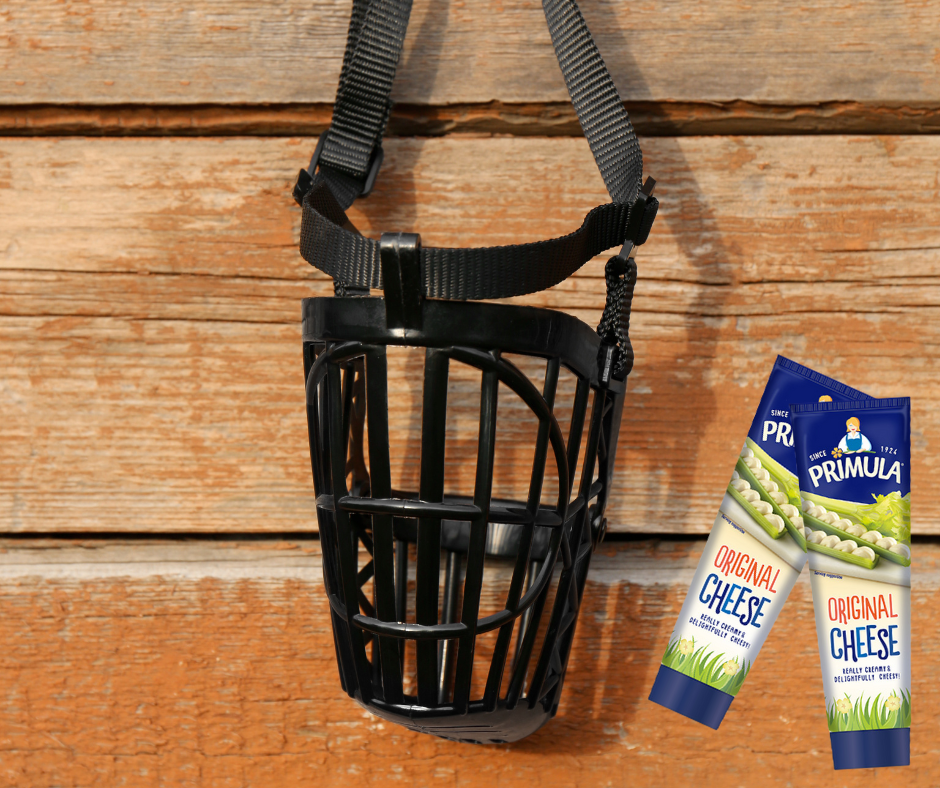
Stage 1 - Introducing the Muzzle
1.0 Present the muzzle to your dog – bring it into view (do not move it towards your dog) and when
your dog acknowledges it (looks, sniffs, approaches), mark by saying “YES” and reward with a treat.
Repeat this action whilst your dog gets more comfortable and starts to show more interest.
1.1 Holding the muzzle still at nose height, pop a treat in the opening of the muzzle. If your dog takes
the treat, mark as above and repeat.
1.2 Place a treat further down into the muzzle to encourage your dog’s nose all the way into the muzzle, as soon as they do, mark as above and repeat.
If they take the treat and quickly retreat or seem hesitant in any way, go back to stage 1.1
1.3 Introduce the Muzzle cue
Continuing stage 1.2 as your dog is getting more comfortable popping
their nose in. Present the loaded muzzle to your dog and say “muzzle”, mark by saying “Yes” and repeat.
As you continue to do this, your dog will learn the cue “Muzzle” means to pop their head into the muzzle.
1.4 Once they are fully comfortable putting their head into the muzzle encourage them to remain with their head in the muzzle by drip feeding further treats into the spaces at the front of the muzzle.
1.5 Use a longer lasting paste for your dog to lick off at the base of the muzzle like cream cheese so they get used to holding their nose in the muzzle for longer.
Stage 2 - Building Duration
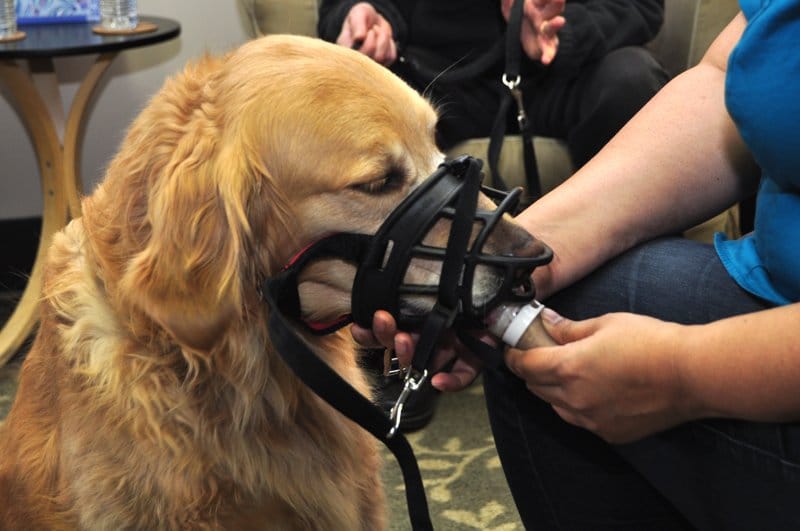
Using the long lasting paste, load up the muzzle, present the muzzle to your dog and say ‘muzzle’, mark
yes as your dog pops their head in and licks the paste.
Just as they reach the end of the paste and just before
they begin to remove their head from the muzzle post a few treats in through the end of the muzzle to encourage them to stay in this position.
Begin to count 1 second in between each treat posted.
Once your dog is comfortable holding their head in the muzzle whilst continuously receiving treats
every second for 30 seconds reduce the rate of reinforcement so that your dog receives a treat every 2
seconds, then every 3 seconds, then every 4 seconds, every 5 seconds and then treat every 6 seconds.
At this stage you can introduce movement, try walking backwards as you treat your dog to encourage them to move with you.
Treat every 7,8,9,10 seconds continuing with movement.
Once your dog is fully comfortable holding their head in the muzzle for a full 10 seconds between treats, you will be ready to move onto stage 3.
Stage 3 - Handling and Fastening
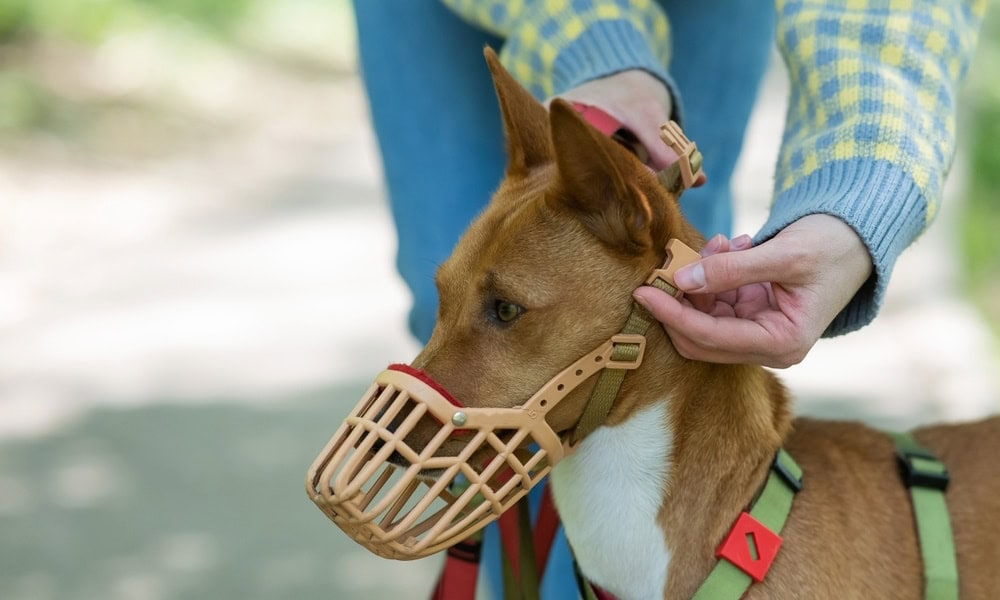
3.0Before attempting to clip up the muzzle, help your dog get comfortable with the ‘click’ sound of the fastening.
Fasten the clip a short distance from your dogs face, when you hear
the click, reward your dog. Slowly reduce the distance so the dog can get comfortable hearing the
noise up close.
3.1 Encourage your dog’s nose into the muzzle as before. Gently touch the undone straps and reward.
3.2 Gradually move one strap up behind your dogs head and reward.
3.3 Move both straps up behind your dogs head and reward – do not fasten them. It may take a few
sessions to get to this point.
If your dog attempts to back out of the muzzle or shows to be
uncomfortable at any point go back a stage.
3.4 Fasten the straps behind your dogs head then instantly unclip and remove it from their face.
This stage can be fiddly so you may find it easier to place the loaded muzzle between your knees to
free up your hands.
3.5 Fasten the strap for 2 seconds, reward and then remove the muzzle.
Stage 4 - Building Duration and Introducing Movement
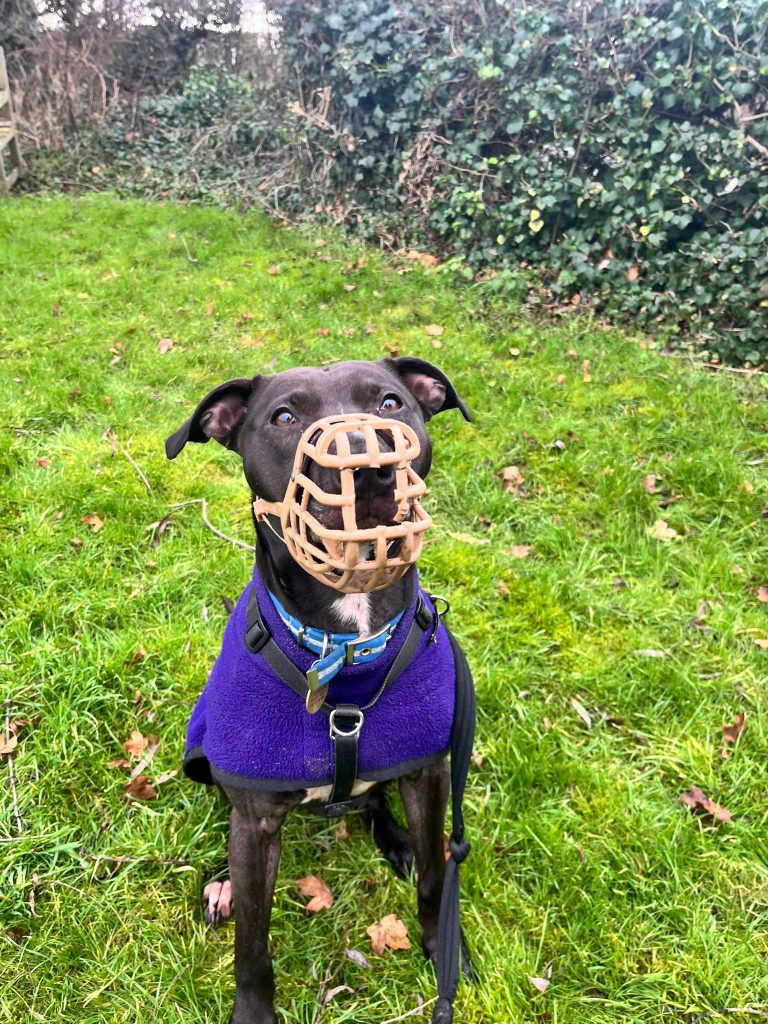
4.0 Gradually work up to your dog being comfortable with the straps fastened for 10 seconds and then reward.
You may find it best to distract attention away from the muzzle by encouraging
them to walk or run with you or by engaging them in their basic training.
4.1 Work up to your dog wearing their muzzle for 30 seconds before rewarding.
4.2 Work up to your dog wearing their muzzle for 1 minute before rewarding.
4.3 Continue building up the time your dog spends with the muzzle on gradually, starting to use it for
short periods when you’re going out for walks whilst reducing the rate of reinforcement.
If your dog paws at the muzzle or rubs it on the ground try to distract them from it with movement such as encouraging them to run with you and then remove the muzzle.
You will need to go back a few
stages and build up the duration slowly
4.4 Once your dog feels comfortable wearing their muzzle for short periods, be sure to practice
wearing the muzzle in a variety of spaces and scenarios.
4.5 If your dog is being muzzle trained for specific triggers/scenarios such as vet visits, grooming ect.
be sure to practice wearing the muzzle in these environments.
You may need to take a few steps
back with the training if your dog feels particularly stressed in this space.
If you require further guidance on muzzle training please do reach out to the team at reception@cdch.org.uk
Want to help?
Become a part the movement that transforms lives and creates a lasting impact by donating just £3 a month.
Categories
- Appeals (9)
- Events (9)
- News & Updates (69)
- Happy Tails (23)
- Past Appeals (84)
- Past Events (96)
- Support & Advice (46)
- Challenge Events (2)
Recent Posts
Related posts

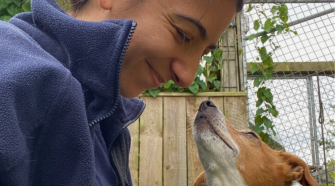
How to Prepare Your Home for a Rescue Dog
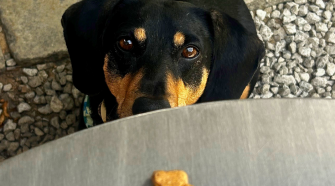
Dog-Friendly Places to Eat in the Cotswolds
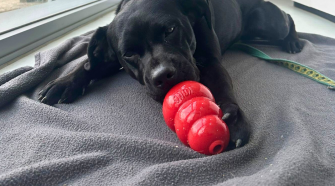
Beat the Heat: Homemade Frozen Treats Your Dog Will Love
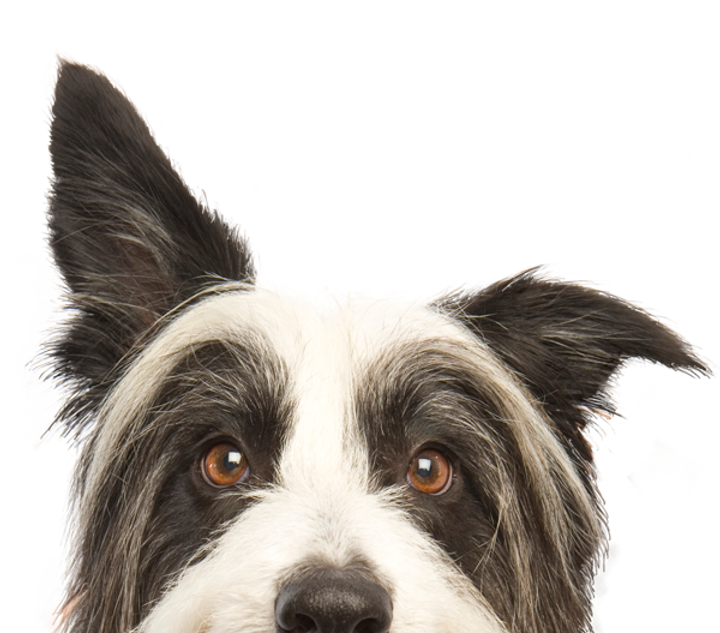
To report cruelty or an animal in distress call 0300 1234 999





